Lallart M. Ferroelectrics: Characterization and Modeling
Подождите немного. Документ загружается.


Nonlinear Hysteretic Response of Piezoelectric Ceramics
539
on the nonlinear hysteretic response; however it might be difficult if not possible to perform
experiments that can trace detailed microstructural changes at various microscopic scales
during the hysteretic response, not to mention incorporating the rate of these changes as
well. A discussion on the development of constitutive models of ferroelectric materials can
be found in Smith (2005) and Lines and Glass (2009).
Bassiouny et al. (1988a and b, 1989) formulated a phenomenological model for predicting
electromechanical hysteretic response of piezoelectric ceramics. They defined a
thermodynamic potential in terms of reversible and irreversible parts of the polarization.
The irreversible part is the energy associated with the residual electric polarization. This
constitutive model leads to rate-independent equations for the electro-mechanical coupling
in piezoelectric ceramics (in analogy to the flow rule plasticity model). Huang and Tiersten
(1998a and b) used a phenomenological based model for describing electro-mechanical
hysteretic behavior in ferroelectric ceramics. Their model can capture the overall nonlinear
hysteretic response, but it does not incorporate the effect of frequencies on the overall
hysteretic response. Another example of phenomenological models of nonlinear rate-
independent hysteretic response of piezoelectric ceramics is by Kamlah and Tsakmakis
(1999). The nonlinearity is due to polarization switching when the piezoelectric ceramics are
subjected to high electric field and compressive stress. Similar to the crystal plasticity model
of Bassiouny et al. (1988a and b) Landis (2002) developed a phenomenological model for
predicting polarization switching in ferroelectric materials. They used an idea of rate-
independent plasticity model and discussed an extension of the constitutive model to
include a rate-dependent response. Tiersten (1971, 1993) developed a nonlinear electro-
elastic model for predicting response of polarized piezoelectric ceramics undergoing large
electric driving fields and small strains. The constitutive model includes higher order terms
of electric fields. Crawley and Anderson (1990) suggested that the nonlinear electric field
can be incorporated by taking a linear piezoelectric constant to depend on the electric field.
Massalas et al. (1994) and Chen (2009) presented nonlinear thermo-electro-mechanical
constitutive equations for elastic materials with memory-dependent (viz. viscoelastic
materials) that incorporate the effect of heat generation due to the dissipation of energy on
the nonlinear thermo-electro-mechanical response of conductive materials. The advantages
of the phenomenological models are in their relatively simple forms in which the material
parameters can be easily characterized from macroscopic experiments, which are beneficial
for designing structures consisting of piezoelectric ceramics.
The electro-mechanical response of ferroelectric ceramics is shown to be time- (or rate-)
dependent within a context of dielectric- and piezoelectric relaxation; however limited
studies have been done on predicting time-dependent response of ferroelectric ceramics. We
extend the concepts of response of viscoelastic solids to evaluate the nonlinear time-
dependent electro-mechanical (macroscopic) response of polarized ferroelectric materials,
i.e. piezoelectric ceramics. General time-integral electro-mechanical phenomenological
constitutive models based on multiple integral and nonlinear single integral forms are used.
We assume that the dielectric and piezoelectric constants of the materials change with
electric field and the rate of time-dependent polarization and strain responses can also
change with the magnitude of the electric field. This manuscript is organized as follows.
Section two discusses a nonlinear time-dependent constitutive model based on integral
formulations for electro-mechanical response of piezoelectric ceramics, followed by
numerical implementation and verification of the models in section three. Section four
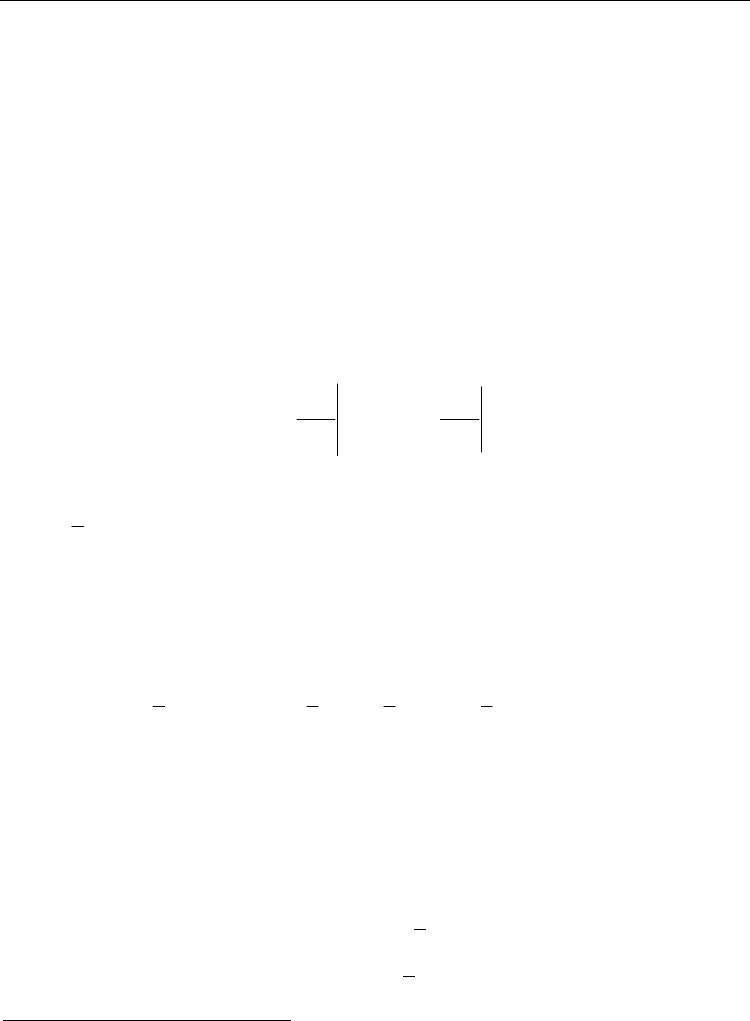
Ferroelectrics - Characterization and Modeling
540
presents analyses of piezoelectric bimorph actuators having time-dependent material
properties. The last section is dedicated to a conclusion and a discussion of the proposed
nonlinear time-integral models.
2. Nonlinear time-dependent constitutive model for piezoelectric ceramics
2.1 Nonlinear electro-elastic constitutive model
A phenomenological constitutive model
2
for polarized ferroelectric ceramics at an
isothermal condition is described in terms of the following field variables: stress σ, strain ε,
electric field E, electric flux (displacement) D. It is assumed that loading is within a quasi-
static condition such that the effect of inertia on the electro-mechanical response can be
neglected. The constitutive model for polarized ferroelectric ceramics can be obtained by
defining a thermodynamic potential
(, )
e
ψ
ε E
(see Bassiouny et al. 1988a; Tiersten, 1993;
Huang and Tiersten, 1998). The relations between the different field variables are obtained
from:
e
ij
ij
ψ
σ
ε
∂
=
∂
E
e
i
i
D
E
ψ
∂
=−
∂
σ
(2.1)
The components of the electric field and strain are expresses as
,ii
E
ϕ
=−
and
()
,,
1
2
i
j
i
jj
i
uu
ε
=+
, respectively; where
ϕ
and
i
u are the electric potential and scalar
component of the displacement, respectively. This study focuses on understanding response
of piezoelectric ceramics undergoing large electric fields and the brittle nature of
piezoelectric ceramics limits their deformation to small strains. The thermodynamic
potential includes up to second order strain tensor and higher order electric field. Tiersten
(1993) suggested the following free energy function at an isothermal condition:
1111
..
2226
e ijkl ij kl ijk jk i ij i j ijkl i j kl ijk i j k
C e E EE b EE EEE HOT
ψεεεκ εχ
=−−− − +
(2.2)
where
ijkl
C ,
ijk
e ,
ij
κ
,
ijkl
b , and
ijk
χ
are the fourth-order elasticity tensor, third-order electro-
mechanical tensor (piezoelectric constant), second-order electric permeability (dielectric
constant), fourth-order electro-mechanical tensor, and third-order electric permeability
tensor, respectively. The above elasticity constants are measured at constant or zero electric
field, while the electrical properties are measured at constant or zero strains. The stress and
electric displacement are:
1
ˆ
2
1
ˆ
2
ij ijkl kl kij k klij k l
i ijk jk ij j ijk j k
CeEbEE
De E EE
σε
εκ χ
=−−
=++
(2.3)
2
We deal with a constitutive model for a continuous and homogeneous body, suitable for simulating
response of a piezoelectric ceramic below its coercive electric field.

Nonlinear Hysteretic Response of Piezoelectric Ceramics
541
where
1
ˆ
2
2
ˆ
ijkl ijkl o ki lj ij kl
ij ij o ij ij
bb
ε
κδδ δδ
κκκδκ
=− −
== +
(2.4)
Here
o
κ
is the permittivity constant at free space and
ij
δ
is the delta Kronecker. Tiersten
(1993) also discussed an alternative expression of the constitutive model with nonlinear
electric field and small strain when stress, electric field, and temperature are taken as the
independent field variables:
1
2
1
2
ij ijkl kl kij k klij k l
i ijk jk ik k ijk j k
SdEfEE
Dd E EE
σσ
εσ
σκ χ
=++
=++
(2.5)
The elastic compliances,
ijkl
S , piezoelectric constant,
ijk
d , and nonlinear electroelastic
constants,
ijkl
f
, are:
1
ˆ
ijkl ijkl
ijk imn mnjk
ijkl ijmn mnkl
SC
deS
f
bS
−
=
=
=
(2.6)
The second- and third-order electric permeability constants are measured at zero or constant
stresses:
ˆ
ij ij imn jmn
ijk ijk imn jkmn
ed
ef
σ
σ
κκ
χχ
=+
=+
(2.7)
2.2 Nonlinear time-dependent constitutive model
In analogy to the time-dependent deformation of viscoelastic materials, we extend the
nonlinear electro-elastic model developed by Tiersten (1993) to include time-dependent
material parameters. There have been several integral models developed to describe
nonlinear viscoelastic behavior: modified superposition principle (Findley and Lai, 1967),
multiple integral model (Green and Rivlin 1957), finite strain integral models (Pipkins and
Rogers 1968; Rajagopal and Wineman 2010), single integral models (Pipkins and Rogers
1968; Schapery 1969), and quasi-linear viscoelastic model (Fung 1981). The work by Green
and Rivlin (1957) provides the fundamental framework for nonlinear viscoelastic response
using the principles of continuum mechanics. It is assumed that small changes in the input
field variables cause only small changes in the corresponding output field variables; this can
be approximated by using continuous functions by polynomials. For a nonlinear viscoelastic
material, Green and Rivlin (1957) formed a sum of multiple integrals of the polynomial
functions to incorporate history of input variables in predicting output at current time. The
constitutive equations (2.3) and (2.5) are expressed in the polynomial functions of
independent field variables. In analogy to the correspondence between elastic and
viscoelastic materials, we extend the nonlinear electro-elastic equations of Tiersten (1993) to
include the time-dependent effect (for non-aging materials):
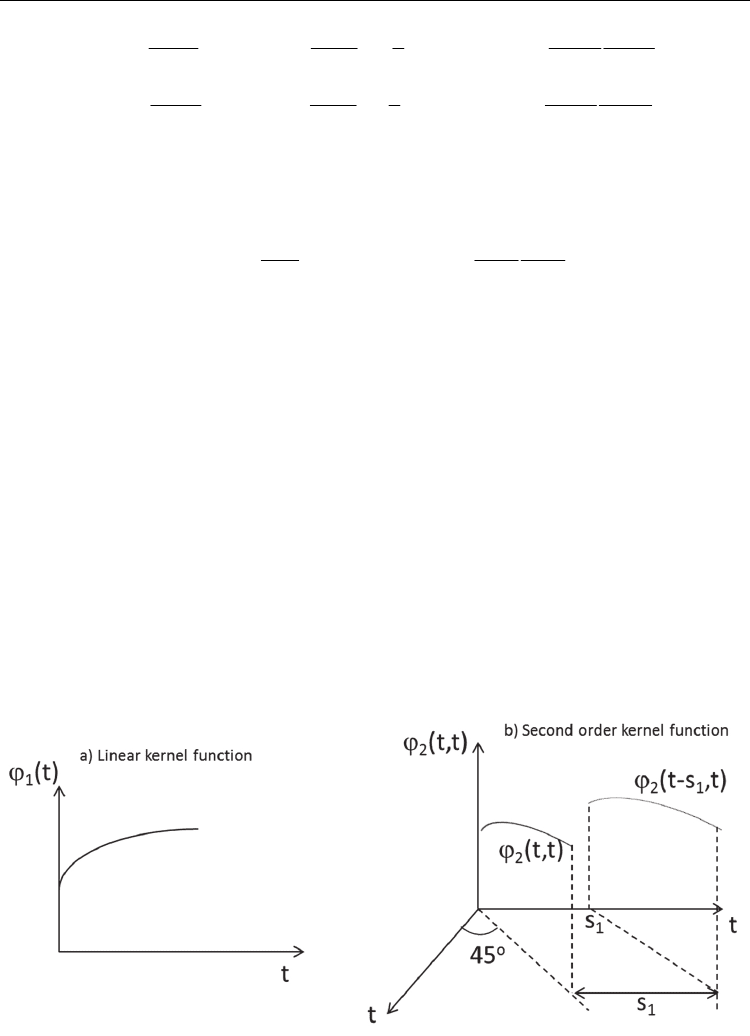
Ferroelectrics - Characterization and Modeling
542
12
12 12
12
00 00
1
2
12
1
00
() () 1 ( ) ( )
() ( ) ( ) ( , )
2
() ( )
() 1 ( )
() ( 2) ( ) ( , )
2
tt tt
kl k k l
ij ijkl kij klij
tt
jk j
k k
i ijk ik ijk
ds dEs dEsdEs
tSts dsdts ds
f
tsts dsds
ds ds ds ds
ds dEs
dE s dE s
D
tdt ds ts ds tsts
ds ds ds d
σσ
σ
ε
σ
κχ
−− −−
−−
=− +− + −−
=− +− + −−
12
2
00
tt
ds ds
s
−−
(2.8)
It is also possible to include higher order terms of the electric field. In order to graphically
visualize the linear and nonlinear kernel functions of time, let us consider a one-dimensional
multiple integral forms (up to the second order):
12
121212
12
000
() ( ) ( )
() ( ) ( , )
ttt
dI s dI s dI s
Rt ts ds tsts dsds
ds ds ds
ϕϕ
−−−
=− + −−
(2.9)
where R(t) is the corresponding output at current time t, I(s) is the input history prescribed
at
0 st
−
≤≤,
1
()t
ϕ
and
2
(,)tt
ϕ
are the two kernel functions. When the kernels are assumed to
increase with time, Fig. 2.1 illustrates the linear and second order kernel functions of time
(see Findley et al. (1976) for a detailed explanation). It is also assumed that the material
response is unaltered by an arbitrary shift of the time scale, so that
2121
(, ) ( ,)tt s t s t
ϕϕ
−= −
.
The following functions can be used for the two kernels in Eq. (2.9):
()/
1
101
( )/ ( )/ ( )/ ( )/
11 21 12 22
21201 2
() (1. )
( , ) (2. ) (1. )(1. )
ts
ts ts ts ts
ts A A e
tsts BB e e B e e
τ
λλ λ λ
ϕ
ϕ
−−
−− −− −− −−
−= + −
−−=+ − − + − −
(2.10)
where A
0
, A
1
, B
0
, B
1
, B
2
,
τ
1
,
λ
1
,
λ
2
are the material parameters that need to be determined
from experiments. A set of experiments may be performed by applying the input variables
at different times, say at t=0 and t=s
1
. The main disadvantage of the multiple integral forms
is in characterizing material parameters from experiments, even when only up to the second
order kernel function is considered. The characterization of material parameters becomes
even more complicated for the anisotropic and nonlinear time-dependent case, which is the
case for piezoelectric ceramics.
Fig. 2.1. Time-dependent kernel functions (see Findley et al., 1976)
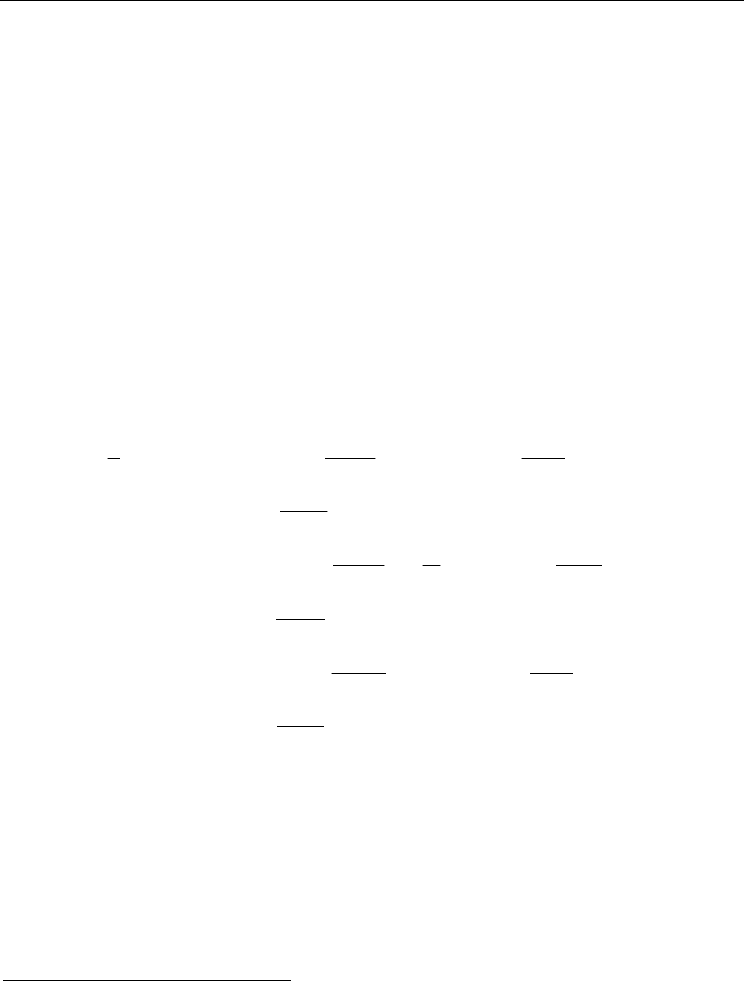
Nonlinear Hysteretic Response of Piezoelectric Ceramics
543
It is also possible to include higher order terms of the electric field. In case of the third order
term is included, the following third order kernel function can be considered:
()/ ()/ ()/
11 21 31
3123 01
()/ ()/ ()/
12 22 32
2
(,,) (3. )
(1. )(1. )(1. )
ts ts ts
ts ts ts
tststs CC e e e
Ce e e
ηηη
ηηη
ϕ
−− −− −−
−− −− −−
−−−=+ − − − +
−−−
(2.11)
It is also necessary that
313131
(,, ) ( ,,) (, ,)ttt s t s tt tt s t
ϕϕϕ
−= − = − .
To reduce complexity in analyzing nonlinear viscoelastic behavior and characterizing
material properties a single integral with nonlinear integrand has been used and found
capable of approximating nonlinear responses in viscoelastic materials. Such models are
discussed in Findley and Lay (1966), Pipkins and Rogers (1968), and Schapery (1969). Chen
(2009) derived a nonlinear thermo-electro-viscoelastic constitutive equation that
incorporates heat generation due to the dissipation of energy
3
and damage. The Gibbs free
energy is defined in terms of a functional of the histories of stress, temperature, temperature
gradient and electric field in the reference configuration and damage is introduced as an
internal state variable. This constitutive model is based on a single integral form that
includes hysteresis, aging, and damage in the electro-active materials, written as:
0
0
0
0
1()()
() (0, , ) (0, , )
2
()
(0, , )
()
1()
() ( ,0, ) ( ,0, )
()
(,0,)
()
tt
kl
ij ij ijkl ij
t
k
ijk
tt
ij
oij g
t
i
i
iii
ds dTs
Ct L J ts ds ts ds
ds ds
dE s
fts ds
ds
dx
dT x
st M t x dx C t x dx
dx T dx
dE x
tx dx
dx
Dt N f
α
ρα
η
−∞ −∞
−∞
−∞ −∞
−∞
Σ
=+ − + − +
−
Σ
=+ − + − +
−
=+
dd
d
dd
d
()
()
( ,0, ) (0, , )
()
(0, , )
tt
jk
jk i
t
j
ij
dx
dT s
t x dx t s ds
dx ds
dE s
ts ds
ds
η
κ
−∞ −∞
−∞
Σ
−+−+
−
dd
d
(2.12)
where , , , , ,TsC Σ DE are the right Cauchy-Green stretch tensor, second Piola-Kirchoff stress
tensor, electric displacement vector, electric field vector, temperature, and entropy,
respectively;
0
ρ
is the mass density at a reference state;
00
,,LM Nare the right Cauchy-Green
stretch tensor, product of the entropy and mass density, and electric displacement tensor at
a reference state; , , , , ,
g
CJ α f ηκ are the compliance, thermal expansion, piezoelectric
constant, pyroelectric constant, dielectric, and heat capacity, respectively;
0
T is the reference
temperature; and d is the damage tensor. It is also necessary that each kernel in Eq. (2.12)
satisfy the following condition:
(,,)(,,)txts tstx
ϕϕ
−− =−−dd. Chen (2009) also discussed
3
Viscoelastic materials are known to dissipate significant amount of energy during cyclic loading; an
electric current flows through a piezoelectric materials also dissipate energy which is converted to heat.
Thus, it is necessary to account for this heat generation in predicting time-dependent response of
piezoelectric materials.

Ferroelectrics - Characterization and Modeling
544
the time-dependent forms for each material property in Eq. (2.12) in order to incorporate
aging and damage.
If we follow an approach suggested by Crawley and Anderson (1990) in which the nonlinear
electric field can be incorporated by taking a linear piezoelectric constant to depend on the
electric field, a single integral model with nonlinear integrand as the first approximation for
modeling the time-dependent electro-mechanical response with nonlinearity due to high
electric field is expressed
4
as:
00
00
() ()
() () ()
()
()
() () ()
tt
ij
kl k
ij ijkl
k
tt
jk
ik
i ijk
k
R
ds dEs
t S t s ds t s ds
ds E ds
ds
FdEs
Dt d t s ds t s ds
ds E ds
σ
ε
σ
−−
−−
∂
=− + −
∂
∂
=− + −
∂
(2.13)
where
[
]
(),
ij k
REt st− and
[
]
(),
ik
FEt s t− are the scalar components of the time-dependent
strain and electric displacement, respectively, at current time 0t ≥ due to an input history
of
()
k
Es. It is assumed that
[
]
[
]
0, 0, 0
ij i
RtFt==and
[
]
[
]
(), (), 0 0.0
ij k i k
REtt FEtt t==∀<. The
following kernels can be used for the material parameters in the constitutive models in
Eq. (2.13):
/
(0) (1)
/
(0) (1)
/
(0) (1)
(0) (1)
(1)
(1)
(1)
() 1.
() 1.
((0),) ((0)) ((0))1.
( (0), ) ( (0)) ( (0)) 1.
t
ijkl ijkl ijkl
t
ijk ijk ijk
t
ij k ij k ij k
ik i k i k
S
ijkl
d
ijk
R
i
j
St S S e
dt d d e
RE t R E R E e
FE t F E F E e
τ
τ
τ
−
−
−
−
=+ −
=+ −
=+ −
=+ −
/
(1)
t
F
i
τ
(2.14)
It can be seen that the above kernels reduce to time-independent functions by eliminating
the second term from the material parameters. By choosing
(0) (1) (0) (1)
( (0)), ( (0)), ( (0)), ( (0))
ij k ij k i k i k
RE RE FE FE
to vary linearly with the electric field, the above
equation reduces to a linear time-dependent electro-mechanical coupling model. It is also
possible to include more than one term for the time-dependent parts in Eq. (2.14). The time-
dependent compliance ( )
ijkl
St and piezoelectric constants ( )
ijk
dt in Eq. (2.14) can be
characterized from creep test by applying constant stresses or from hysteretic response due
to cyclic stress inputs at different frequencies. The components of strain ( )
ij
Rtand electric
displacement
()
i
Ft can be determined from the hysteretic response due to sinusoidal electric
field inputs at different amplitudes and frequencies. If the experimental setup permits for
4
This approach yields to a nonlinear single integral model of Pipkins and Rogers (1968).
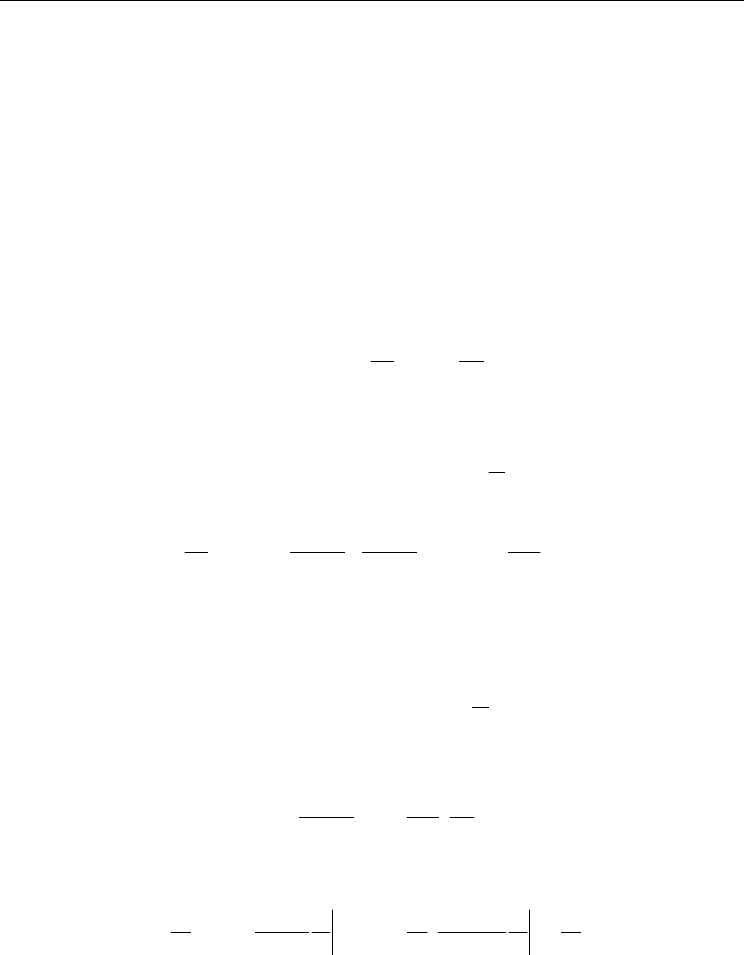
Nonlinear Hysteretic Response of Piezoelectric Ceramics
545
applying a fixed electric field, then the time-dependent strain and electric displacement can
also be determined from this test. It is noted that for a piezoelectric ceramic such as a
polarized PZT (let x
3
be the poling axis), only some of the components of the material
parameters are nonzero, reducing the experimental effort in calibrating these parameters.
2.3 Time-integration methods
We present a numerical algorithm for determining time-dependent response of strain and
electric displacement due to arbitrary stress and electric field inputs. We start with a
numerical algorithm for one-dimensional single integral model with a nonlinear integrand
and followed by an algorithm for multiple integral representations.
Let
[
]
(),RIt s t− be the time-dependent response at current time 0t ≥ due to an input
history
()
s
IIs≡ . A general single integral representation for the response is:
0
0
[,] [,] [, ] 0
t
s
ts s
RdI
RRItRIt Its dst
Ids
+
∂
≡=+ − ≥
∂
(2.15)
where
000
01
1
[,] () ()1.exp
t
RI t R I R I
τ
=+ −−
(2.16)
01
1
() ()
[, ] 1.exp
ss
s
RRIRI ts
It s
III
τ
∂∂∂ −
−= + − −
∂∂∂
(2.17)
Here we use a superscript to denote the time-dependent variables. A recursive method is
used for solving the above integral form. Substituting Eqs. (2.16) and (2.17) into Eq. (2.15)
yields:
0
011
1
() () ()exp
tt t t
t
RRI RI RI q
τ
=+− −−
(2.18)
where
1
1
0
()
exp
t
ss
t
RI t sdI
qds
Ids
τ
+
∂−
=−
∂
(2.19)
is the history variable, which can be approximated as:
11
11
() ( )
exp exp 0.0
2
ttt
ttt
ttt
tRIdI tRIdIt
qq t
Ids I ds
ττ
−Δ
−Δ
−Δ
Δ∂ Δ∂ Δ
≈− + +− >
∂∂
(2.20)
The superscript tt−Δ denotes the previous time history. At initial time,
0
0.0
t
qq== and
00
0
()RRI= . Equations (2.18) and (2.19) give the corresponding output due to an arbitrary
input I(s). For the multi-axial constitutive relation, the approximate solution in Eq. (2.18) can
be applied independently to each scalar component in Eq. (2.13).

Ferroelectrics - Characterization and Modeling
546
The numerical algorithm for the multiple integral models (one-dimensional representation)
in Eq. (2.9) with the kernels defined in Eq. (2.10) can be approximated by applying the
recursive method as discussed above. The linear kernel is approximated as:
[]
10111
1
0
()
() () (0)exp
t
t
dIs t
ts ds A AIt AI
q
ds
ϕ
τ
+
−
−≈+− −−
(2.21)
111
11
exp exp 0.0
2
ttt
ttt
ttdItdI
qqA t
ds ds
ττ
−Δ
−Δ
ΔΔ Δ
≈− + +− >
(2.22)
The second order kernel is rewritten as:
12
212 12
12
00
// / /
11 2 2
01 2
()/ ()/ ()/ ()/
12
11 21 12 22
01 2
12
0
() ()
(,)
(2. ) (1. )(1. ) (0 ) (0 )
() ()
(2. ) (1. )(1. )
tt
tt t t
ts ts ts ts
Is Is
t s t s ds ds
ds ds
BB e e B e e I I
Is Is
BB e e B e e
ds ds
dd
dd
λλ λ λ
λλ λ λ
ϕ
−− − − ++
−− −− −− −−
−−
−− =
+−− + − − +
+− − + − −
12
0
tt
ds ds
++
(2.23)
and it can be approximated by:
()
()()()
()()()
12
212 12
12
00
// / /
11 2 2
01 2
2
01 1 11
2
22222
() ()
(,)
(2. ) (1. )(1. ) (0 ) (0 )
2()(0) ()(0)
() (0) () (0) () (0)
tt
tt t t
tt
tt tt
Is Is
tsts dsds
ds ds
BB e e B e e I I
B B It I B It I f g
BItI fItI gItI fg
dd
λλ λ λ
ϕ
−− − − ++
++
+++
−−
−− ≈
+−− + − − +
+−−− ++
− − −− −+
(2.24)
where the history variables
1212
,,,
tttt
f
fgg at 0.0t > are given as:
11
1111
11
1212
22
2121
2
exp exp
2
exp exp
2
exp exp
2
ttt
ttt
ttt
ttt
ttt
ttt
ttdI tdI
ff
ds ds
ttdI tdI
gg
ds ds
ttdI tdI
ff
ds ds
g
λλ
λλ
λλ
−Δ
−Δ
−Δ
−Δ
−Δ
−Δ
ΔΔ Δ
≈− + +−
ΔΔ Δ
≈− + +−
ΔΔ Δ
≈− + +−
2
2222
exp exp
2
ttt
ttt
ttdI tdI
g
ds ds
λλ
−Δ
−Δ
ΔΔ Δ
≈− + +−
(2.25)
At initial time,
0000
1212
0.0ffgg==== and
00
(0) (0 ) (0 ) (0 )RAI BII
+++
=+ . Thus, the
corresponding response due to an arbitrary input obtained from the multiple integral model
is approximated as:

Nonlinear Hysteretic Response of Piezoelectric Ceramics
547
[]
()
()()()
()()()
01 1 1
1
// / /
11 2 2
01 2
2
01 1 11
2
22222
() () exp
(2. ) (1. )(1. ) (0 ) (0 )
2()(0) ()(0)
() (0) () (0) () (0)
t
tt t t
tt
tt tt
t
Rt A A It A q
BB e e B e e I I
B B It I B It I f g
BItI fItI gItI fg
λλ λ λ
τ
−− − − ++
++
+++
≈+ − −−+
+−− + − − +
+−−− ++
− − −− −+
(2.26)
For the multi-axial constitutive relation, the approximate solution in Eq. (2.26) can be
applied independently to each scalar component in Eq. (2.8).
3. Numerical implementation and parametricstudies
We present a numerical implementation of the above time-dependent constitutive models.
We include parametric studies on understanding the effects of different material parameters
and input histories on the overall time-dependent response of polarized ferroelectric
materials. Both nonlinear single integral and multiple integral models will be discussed.
3.1 Single integral model
This section deals with using a single integral model to simulate hysteretic response of a
polarized ferroelectric, which focuses on PZTs, subject to a sinusoidal electric field input. Let
x
3
be the poling axis of the PZT and an electric field input
3max
() sinEs E t
ω
= is applied along
the poling axis. We consider several case studies: linear time-dependent response at a stress
free condition, nonlinear time-dependent response at a stress free condition, and response
under a combine mechanical stress and electric field. The following material parameters are
considered for the linear time-dependent electro-mechanical coupling and dielectric
constant:
/5 12
333
/2 12
311 322
12
113 223
/10 9
33
9
11 22
( ) 380 150(1. ) 10 / ( / )
( ) ( ) 200 100(1. ) 10 / ( / )
437 10 / ( / )
( ) 23 2.3 10 /
30 10 /
t
t
t
dt e CNmV
dt dt e CNmV
dd CNmV
teFm
Fm
σ
σσ
κ
κκ
−−
−−
−
−−
−
=+ − ⋅
==−−−⋅
==⋅
=+ ⋅
==⋅
(3.1)
The first case considers sinusoidal electric field inputs at three different frequencies: 0.01,
0.1, and 1 Hz and two amplitudes: 0.25 and 0.75 MV/m. Figure 3.1 illustrates the electric-
field and transverse strain (E
3
-ε
11
) response during the first quarter cycle. It is seen that the
electric-field and strain curves show nonlinear behavior which is due to the delay (time-
dependent) response of the material. The nonlinearity is more pronounced as the frequency
decreases. At the frequency 1Hz the curve shows almost a linear behavior as the electric
field is applied relatively fast with regards to the characteristics time of the materials and
thus only a little time is given for the material to experience a time-dependent (or relaxation)
effect. From Eq. (3.1), the characteristics time of the electro-mechanical coupling
311
d is 2
seconds. Thus, one should be very careful when interpreting an experimental data that
involves nonlinear phenomena. As shown in Fig. 3.1, the response seems to suggest the
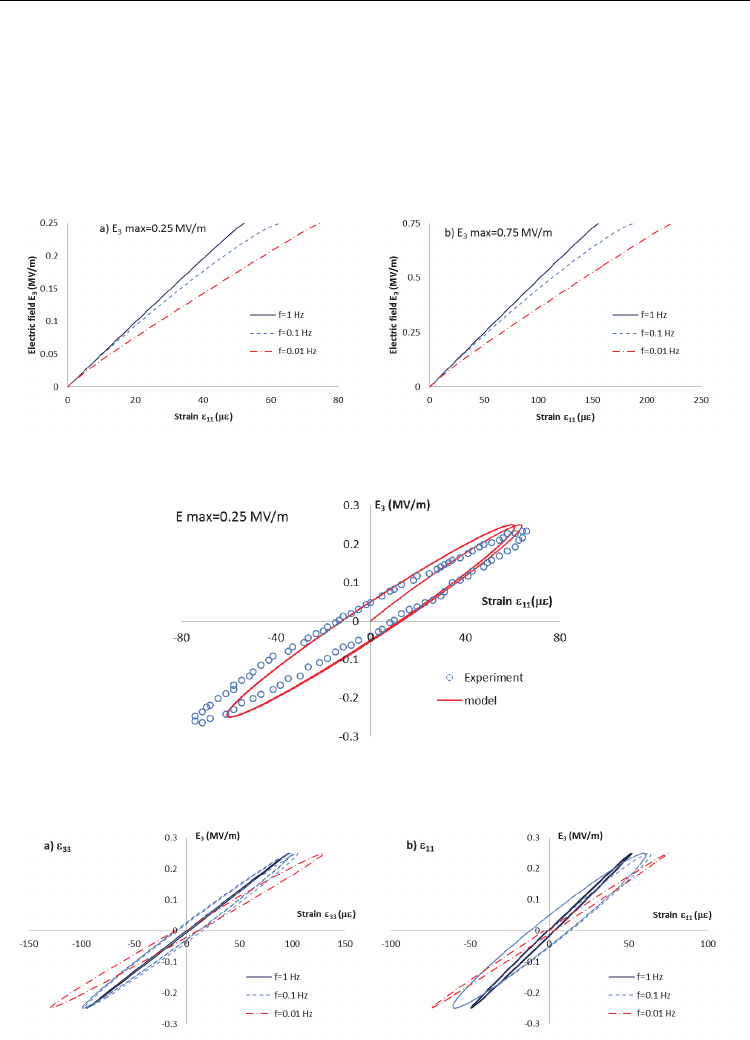
Ferroelectrics - Characterization and Modeling
548
nonlinear relation between the electric field and transverse strain which can be attributed to
the electric field (or strain) dependent material properties, but instead this nonlinearity is
due to the linear time-dependent effect. Figure 3.2 shows a hysteretic response of a PZT
material at frequency 0.1 Hz and maximum applied electric field of 0.25 MV/m.
Experimental data are obtained from Crawley and Anderson (1990). The single integral
model with time-dependent material parameter in Eq. (3.1) is shown to be capable of
simulating the hysteretic response.
Fig. 3.1. Transverse strain responses during the first quarter cycle of the sinusoidal input
Fig. 3.2. Linear hysteretic response of a PZT at f=0.1 Hz
Fig. 3.3. Linear hysteretic response of the axial and transverse strains
